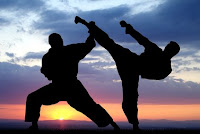The last panel I went to at the GTD Summit in San Francisco was called “Best Practices to Good Habits: Can I Make GTD Stick?” The panelists were GTD coaches and very experienced practitioners. As can be expected the discussion produced some gold nuggets in the form of tips to making GTD a habit.
A panel the previous day featured a cognitive theory expert, Frank Sopper, who explained that the two numbers you need to know for large scale behaviour change are: 2 years and 15 minutes. It takes 2 years apparently from initiation to competency (that you can see and measure), for any new thing you want to learn – whether it’s learning a new language, the trumpet, or getting really fit. 15 minutes was the other important number in behaviour change: Once you pick the thing you want to master, spending 15 minutes a day can be transformative – not one hour a week, or a month-long intensive per year. Only 15 minutes a day is needed, because it’s the repetition of doing something 700+ times (e.g. daily), rather than 104 times (weekly) that makes the behaviour stick. The repetition of the desired behaviour deepens those neural grooves.
The panelists gave us lot of tips and tricks, many in the black-belt category (for nuanced users of GTD.) So what was some of the gold the panelists had for us?
- Making your Project and Context lists work: Look over your project lists and make sure there is a verb in each entry. These verbs could be: complete, finalise, ensure, maximise, etc. If you don’t see a verb then you will have to think about what “done” looks like every time you look at your list. As a result it will take you more time to do your review. Your Context or Next Actions (e.g. @Calls, @Computer, etc.) lists should also have verbs. You want to have done all the thinking before you review to make these more useful lists. The time savings adds up – one panelists even advocated getting a Mac because the start up time is much faster!
- Use your Projects list for scoping: For each project, write three sentences – 1) Why you are doing this; 2) A set of 3 principles (I can do anything I want as long as I…); and 3) What does wild success look like?
- Dump anything that creates drag on the system: Be ruthless and get rid of anything that takes time, or creates drag. For example, if you don’t like some of your equipment, change it to something you do like (e.g. get rid of psychic drag) – like the file folders, or filing cabinet, or your notebook or pen (one panelist got rid of all his different pens and replaced them with one kind of pen so he would never have to hesitate when picking a pen). Cull you lists too from time to time to take off things that you don’t want to do, and put them on your Someday/Maybe List. Having stop to choose between x and y, or between things you aren’t ready to do can create drag, so eliminate the choices if you can, save time there, and have a system that engages you, rather than repels you.
- Managing your in-box: Some people find their in-box distracting during the day (when they are not processing, but doing), if so you can put it behind you, or use a closed box with a lid as an in-box, from which you can take one piece of paper at a time to process when you get back to that stage.
- Review your folders from time to time: If you are keeping an A-Z filing system, you can put a tick on the folder you use, each time you pull it. That way you can see over time which folders you are using frequently and which are not being used. Check the un-useful ones and see if they are mis-labelled, or maybe could be eliminated. Also notice where you look for something, if you always look one place, and then repeatedly locate the file on your second or third try – then its not in the right place so re-label it.
- Use multiple A-Z systems if needed: If you have more than half drawer of folders on the same subject you might want to make a separate A-Z system on that topic. For example, if you have a large ongoing project, or if you are an avid gardener and have many folders on that topic, that project might need its own sub-system.
- If your Lists are too long: If you have too many items on your lists (e.g. more than 60-100 Next Actions), see if there are multiple lists that can be made. Maybe your contexts are too broad (e.g. if you just have a Tasks list, consider the different place the Tasks can happen and create lists for @Indoor, @Outdoors/Garden, @Spouse etc. You can also consider having multiple Someday/Maybe lists if you have big projects. Instead of putting everything under one, create Someday/Maybe lists for (e.g.) household renovations, project ideas for work, fundraising, etc. You can even add timing to your Someday/Maybe lists, such as weekly, quarterly, yearly, depending on how often you want to be reviewing them. All these things can shorten your lists if you are feeling uncomfortable with the length.
- Do your Weekly Review: This was considered one of the most important things to making GTD stick. Some people schedule it, others do it when they need it (like brushing your teeth, when they feel scuzzy, you brush them.) And perhaps, as in David’s new book, the process will no longer be called the Weekly Review, but instead Time to Reflect. As overall this is the time to ask yourself what does this action mean to me, in order to prioritize, defer or get rid of it.
It was useful to hear these GTD experts and their tips and advice. It helps you sift through the detail, the gravel and the sand, and find that gold.













 What kind of creative process produces ideas like a
What kind of creative process produces ideas like a 




